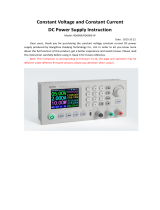
iii
6.1.3. Data Management ........................................................................................................ 6-2
6.1.4. Maintenance Status ...................................................................................................... 6-3
6.1.5. Software Upgrade ......................................................................................................... 6-4
6.1.6. Enter Windows .............................................................................................................. 6-7
6.1.7. Model Setup .................................................................................................................. 6-7
6.1.8. Installing Optional Software .......................................................................................... 6-8
6.2. System Self-diagnosis .......................................................................................................... 6-9
6.2.1. Screen Introduction....................................................................................................... 6-9
6.2.2. Item Select Area ......................................................................................................... 6-10
6.2.3. Info Display Area ......................................................................................................... 6-10
6.2.4. Status Bar ................................................................................................................... 6-11
6.2.5. Structure Diagram Area .............................................................................................. 6-11
6.2.6. Description of Self-diagnosis Test Items ..................................................................... 6-12
7 Care and Maintenance ................................................................................................ 7-1
7.1. Overview .............................................................................................................................. 7-1
7.1.1. Tools, Measurement Devices and Consumables ......................................................... 7-1
7.1.2. Care and Maintenance Items ....................................................................................... 7-1
7.2. Cleaning ............................................................................................................................... 7-3
7.2.1. Clean the System ......................................................................................................... 7-3
7.2.2. Content ......................................................................................................................... 7-3
7.2.3. Clean the Peripherals ................................................................................................... 7-5
7.3. Checking .............................................................................................................................. 7-6
7.3.1. General check ............................................................................................................... 7-6
7.3.2. System Function Check ................................................................................................ 7-6
7.3.3. Peripherals and Options Check .................................................................................... 7-7
7.3.4. Mechanical Safety Inspection ....................................................................................... 7-7
7.3.5. Electrical Safety Inspection .......................................................................................... 7-9
8 Troubleshooting of Regular Malfunctions ................................................................ 8-1
8.1. Recover after the operating system is damaged ................................................................. 8-1
8.2. Recover after the ultrasound software is damaged ............................................................. 8-2
8.3. Recover after the patient database is damaged .................................................................. 8-4
8.4. Recovering after HDD fails ................................................................................................... 8-4
8.5. Inspection flowchart for power adapter and dc-dc circuit ..................................................... 8-6
8.6. Inspection flowchart for battery and charging ...................................................................... 8-7






















